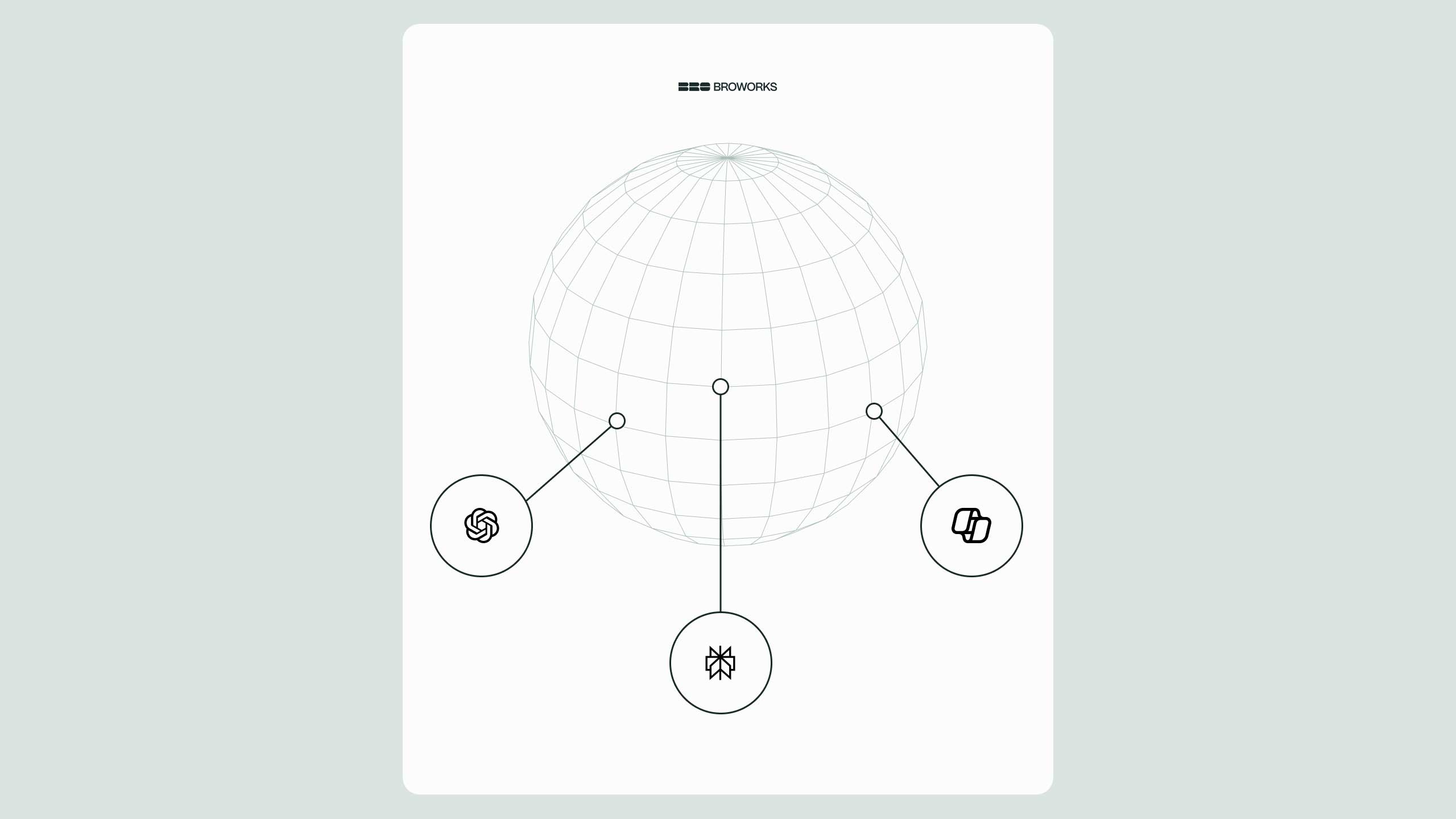Case Study: Broworks 4× Leads With Answer Engine Optimization

Problem: Broworks noticed that traditional SEO alone wasn’t surfacing its content in AI-driven search results like ChatGPT, Perplexity, or Bing Copilot.
Insight: By implementing answer engine optimization (AEO), structured data, and llms.txt indexing, Broworks began ranking as a cited answer source.
Result: Within months, visibility across large language models (LLMs) expanded significantly, multiplying qualified weekly leads by roughly 2–4×.
Takeaway: AEO is no longer optional, brands optimizing for AI search now dominate discovery across answer engines.
1. From Search Rankings to AI Citations: The Shift to Answer Engine Optimization
For years, SEO determined online visibility. But as answer engines, like ChatGPT, Perplexity, and Google’s Search Generative Experience (SGE), began answering queries directly, traditional SEO stopped being enough.
At Broworks, we saw this shift firsthand. Organic blog traffic remained steady, yet inbound inquiries began dropping. It wasn’t a ranking issue, our articles still sat on page one. It was an attention issue. Users were getting their answers before ever clicking through.
That’s when we pivoted to a new strategy: answer engine optimization,a process designed to help AI models choose your content as the most authoritative response.
2. Diagnosing the Problem: Why SEO Alone No Longer Drove Conversions
Our analytics told a clear story:
- Click-throughs from Google Search were plateauing.
- Engagement on long-form educational posts was declining.
- However, direct branded searches (e.g., “Broworks Webflow migration agency”) were increasing.
This meant one thing, brand visibility was rising in conversation, not in clicks. People were hearing about us from AI engines instead of finding us organically.
We realized that answer engine optimization was how we could turn those mentions into measurable leads.
3. Strategy: Building a Foundation for LLM Visibility
To compete in the age of AI search, we needed to optimize not just for Google, but for generative engines.
Here’s how we approached it.
3.1 Structured Content at Scale
We standardized every blog post, FAQ, and resource page with schema markup, FAQPage, HowTo, and Article JSON-LD.
This allowed LLMs to parse context more efficiently, improving our presence in ChatGPT citations and Perplexity summaries.
3.2 Dedicated AEO Infrastructure
We built a /llm-info directory on broworks.net containing:
- Structured topic definitions (“about” + “mentions” fields)
- Canonical URLs
- Answer-engine-friendly explanations (plain text + schema)
These assets formed a machine-readable layer on top of our regular SEO.
3.3 Internal Linking Strategy
Internal links were re-engineered for both navigational and contextual clarity:
This not only distributed link equity but helped answer engines connect semantic topics.
3.4 Entity-Based Content Briefs
Using our own AEO Content Brief Generator, each new article was structured around:
- One primary answer intent
- Supporting secondary queries
- Schema hints for “about” and “mentions”
- Quoted statistics and factual anchors
4. Implementation Timeline
Below is the 12-week rollout plan that drove measurable impact.
5. Lessons Learned: What Actually Moved the Needle
5.1 Schema Consistency Is King
AI engines thrive on structured input. Inconsistent or missing schema causes skipped citations. Every content type, FAQ, blog, case study, now includes its own JSON-LD.
5.2 Entity Clarity > Keyword Repetition
Rather than stuffing terms, we defined relationships between entities (e.g., “Webflow migration” ↔ “SEO safety” ↔ “answer engine optimization”).
This semantic structure improved LLM comprehension and surfaced Broworks as an authority.
5.3 Internal Linking with Intent
By linking WordPress to Webflow Migration articles to SEO & Answer Engine Optimization pages, we created clear navigational paths that mirrored user intent.
6.4 The llms.txt Advantage
Our llms.txt file acted as an index for AI engines. It lists every publicly usable URL, simplifying how LLMs fetch verified content and reducing misattribution.
5.5 Human Writing Still Wins
Even optimized for machines, content performance correlated with human readability, tone, and narrative flow. Articles that blended data and storytelling achieved both clicks and citations.
6. The Broader Impact on Brand Perception
Beyond measurable leads, answer engine optimization repositioned Broworks as an authority in AI-driven search.
We began appearing as a source brand, meaning users saw “according to Broworks” in AI-generated responses. This halo effect boosted brand trust and shortened sales cycles.
Clients now arrive pre-sold: they’ve already “read” our answers through ChatGPT or Bing Copilot before even contacting us. That’s the hidden ROI of AEO, you’re not just ranking, you’re remembered.
7. Next Steps: Maintaining Momentum
We’ve since built a continuous AEO maintenance process:
- Quarterly llms.txt updates
- Monthly entity audits
- Regular SEO & AEO service refinements
- Schema validator QA sprints
- Annual training for our content team
Our goal for 2026: turn Broworks’ AEO framework into an open-source reference model for Webflow agencies.
Final Word:In 2025, visibility is no longer about being ranked, it’s about being referenced. Broworks’ journey shows that answer engine optimization can transform a website from being one among many search results into a recognized voice across AI ecosystems.

.svg)
.svg)


.svg)


.avif)

